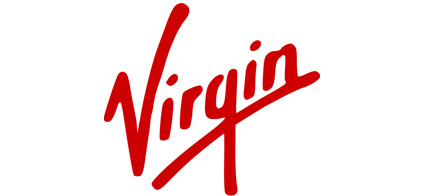What if I told you that 30 days from now, your life could change forever?
What if I said that in less than the span of a month, you could raise money for your passion, connect with a new group of fans, and have your name appear on blogs across the internet?
Sound too good to be true? Keep reading!
Since launching in 2009, Kickstarter has helped authors, musicians, and designers raise more than $840 million for their creative projects.
With 1,459,001 repeat supporters on the website, Kickstarter is quickly becoming the #1 community for talented creators to breakout of their local niche and attract funding, new fans, and media attention.
In the span of 30-60 days, you too can launch a campaign, and raise money for a project that you are passionate about.
So, where should you start? How can you get a piece of the pie?
1. Engage in the community
Before jumping in the river, get a feel for the types of projects on the website and the etiquette surrounding comments, promotion, and updates.
Back a few projects that you are passionate about. Receive email updates from the founders. Engage on project pages via comments. Follow the projects on twitter and like their campaign page on facebook.
All of this interaction on the website will:
Show that you are willing to give before you receive. Backers will check out your Kickstarter profile if you decide to launch a campaign and they like to see that you have backed a few projects.
Give you an idea of how to structure your project with regards to updates, reward tiers, answering backer comments, and driving traffic to your crowdfunding campaign.
2. Form a concrete project idea
Kickstarter is open to creators over creators over the age of 18 and based in the US, the UK, Canada, Australia, and New Zealand. The platform requires that your project idea fits into one of the following categories: Art, Comics, Dance, Design, Fashion, Film, Food, Games, Music, Photography, Publishing, Technology, and Theater.
Be sure to thoroughly review Kickstarter’s guidelines before settling on a project idea.
As you form your project idea, it’s important to begin to think about why you are qualified to pull off the creation of the product, what audience your project caters to, and how you are going to communicate your passion to potential backers.
If your idea doesn’t fit into a category, you may want to consider retooling or going with another platform like Indiegogo or RocketHub.
3. Assess your audience, the industry, and research similar campaigns.
This is the most important part of the fundraising process because it forms the basis of how you will go about preparing for the Kickstarter campaign.
Do your homework! Be sure to answer the questions below:
– What audience does your product cater to?
– What do they care about and how will you involve them in the creative process via rewards or “perks”?
– Where do potential backers congregate? Forums? LinkedIn Groups? Google+ Groups? Blogs? Make a list.
– How have similar campaigns done in your category? What actions have they taken to become successful?
– How many pledges can you count on via your social network and how much will you need to attract from strangers?
4. Prepare your campaign.
The #1 trend that I have experienced from conducting interviews with creators and reviewing countless campaigns is that well prepared creators are successful creators.
It’s important that you do a thorough fundraising analysis, calculating how much it will cost to produce rewards, how much you will need to make the project a reality, and what Kickstarter fees will end up costing you.
The more transparent that you can be with your backers, the better. What is a realistic ship date for the rewards?
Be sure to show them what has already been completed in your creative endeavor via photos and video.
The preparation phase is when you take all your research and create an actionable plan for marketing and promotion. What bloggers will you reach out to asking to write about your new Kickstarter campaign? When will you reach out to them?
My motto always is: hope for the best, plan for the worst. It’s true that you might become a crowdfunding sensation, receiving funds from backers around the globe, but plan to drive your own traffic and hustle to reach your fundraising goal.
5. Launching is only the beginning.
In the words of a recent Kickstarter project creator, “You will not relax during your campaign – because when you do, it means less traffic. When I’m out at a bar seeing a friend, or buying groceries, or relaxing to a movie – I can’t sit still long because the only thing running through my head is “right now – by not publicizing your project – you are lessening your funding potential” – source
Some campaigners will receive 20% of funds for their project from strangers. Others will be able to attract 70% of their funds from strangers. It varies on the campaign and the promotional activities that the creator is willing to take.
Play it safe and work your ass off. To me, running a crowdfunding campaign is like compressing months of hard work into an intense 30 day time period. If you’re successful, you will have bloggers writing about you, new customers, orders, and funds to fuel your passion.
At the end of the day, you must ask what your dream is worth to you. Are you willing to stay up late at night to make your dream a reality, or will your brilliant idea join the trash bin with your failed New Years Resolutions and unfulfilled potential? You decide.




